
Latest News
This Growing Market is Primed to
Prosper in a Net Zero World
DevvStream (DESG: NEO)
is Grabbing Market Share
Over the last few years, we’ve seen a race towards clean energy and reducing greenhouse gas.
Why? Because climate change has ramped up.
Severe wildfires, droughts, flooding and storms have grown increasingly visible and dangerous.
That’s why we’ve seen governments throughout the world aggressively push through policies to cut out emissions, trying to reverse the course we’re on Some examples are:
- The Biden administration announcing that the U.S. will aim to cut emissions more than 50% below 2005 levels by 2030.
- The European Union passing laws to cut greenhouse emissions at least 55% by 2030 – with the ultimate goal in making the EU climate neutral by 2050.
- And China declaring that the country will aim to be carbon-neutral by 2060 – a dramatic step for the second largest economy in the world.
These three – the U.S., EU and China – alone make up roughly half the world’s economy and roughly 30% of the earth’s total population.
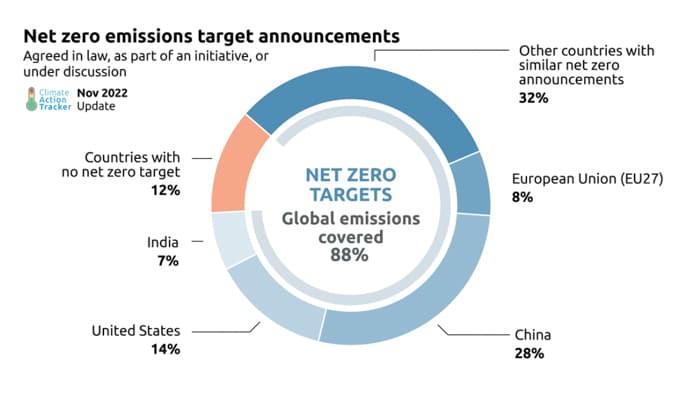
This trend towards ‘Net Zero’ (aka cutting emissions as close to zero as possible) will only increase as the rest of the world joins the race.
And it’s creating opportunities for savvy investors who know where to look
“Saving the planet while also profiting. What’s better than that?”
It’s extremely rare to find such win-win situations.
That’s why you need to hear about this next part so you can capture upside from this global race towards Net Zero…
Carbon Credits: What They Are and How They’re Critical in a Net-Zero World
As the world moves faster and faster towards a net-zero future, achieving it will require some special tools.
And that’s where carbon credits come in.
To put it simply, carbon credits are a kind of certificate that represents one metric ton of CO2 (or the equivalent amount of a different greenhouse gas).
- These carbon credits are most often created through agricultural, forestry, or renewable energy projects.
- Going forward 80% of the credits will be created from tech-based projects.
For every one metric ton of CO2-equivalent greenhouse gas that a project avoids, reduces, or removes from the atmosphere – it will generate one carbon credit.
And what makes this so special is that these carbon credits are tradeable.
Hence organizations will buy these carbon credits to offset their own greenhouse gas output and the number of climate commitments keep growing each year. 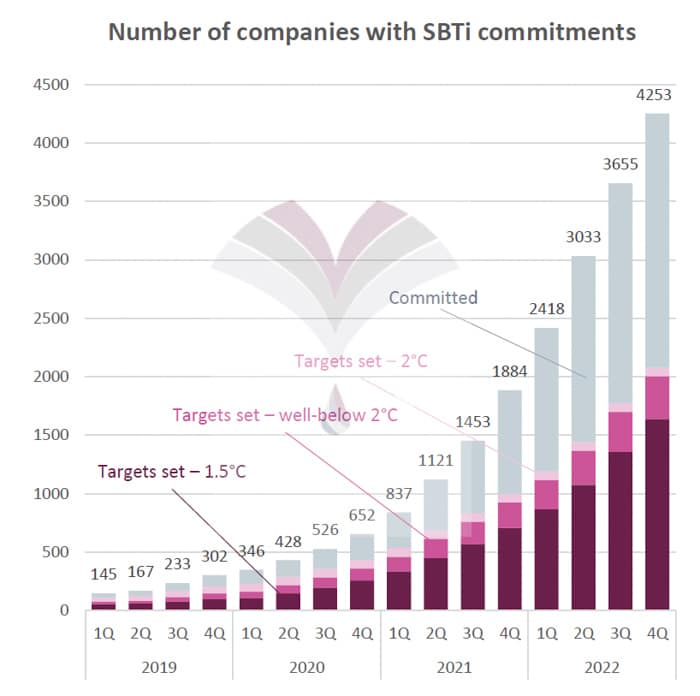
For example, a car producer trying to offset their emissions will buy carbon credits from a farmer that planted trees, to balance out the CO2 emitted and the CO2 sequestered.
These credits are then “retired, showing that they CO2 sequestered has been use against the pollution generated. Now, it’s important to remember that there are two main carbon credit markets:
- The voluntary market – which is where a corporation or entity buys carbon credits to offset their emissions because they have made commitments to become net zero. This market contains the first type of carbon credits we discussed.
- And the compliance market – which is regulated by governments to cap emissions for heavy polluting industries. This market contains the permit-type carbon allowances.
And while the voluntary market has grown significantly in the last few years, it’s still tiny compared to the involuntary market – for now.

The “Tiny” Voluntary Market is $2 Billion
By 2030 it will be $10-$40 Billion
This explosive growth will be fueled by firms scrambling to make good on their Net Zero commitments and inventories are set to decrease in the future.
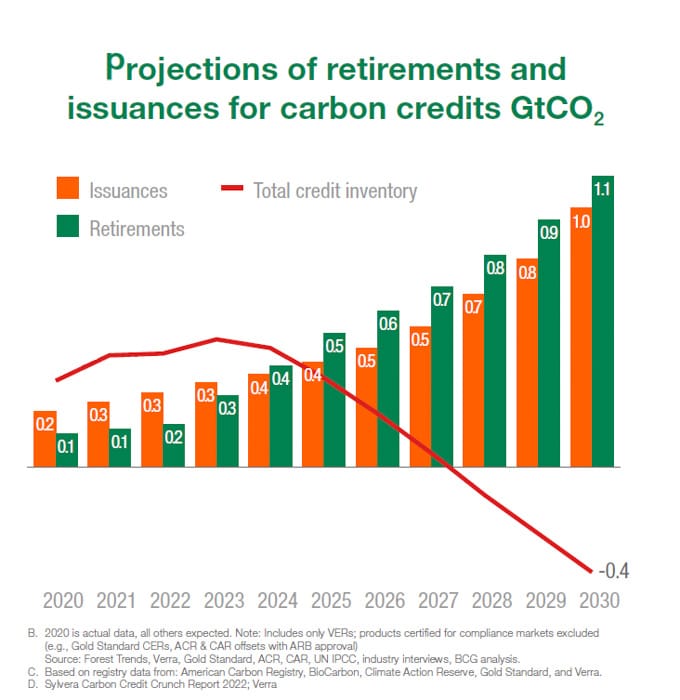
Acquiring a future “Stream” of carbon credits ensures that firms will have access to these highly sought after assets in the future.
The Carbon Credit “Stream” for a Cleaner Future
In its simplest form, a carbon streaming company functions in two basic ways.
- Upfront financing projects that will generate carbon credits in the future,
- And then receiving a “stream” of these high-quality carbon credits at discounted prices.
The Streamer acts as both:
- A long-term partner with incentives for the project developer to succeed, and
- A buyer of the high-quality carbon credits the project will yield in the future.
Thus, both parties – the carbon streamer and the ‘net-zero’ developer – benefit greatly from working together.
Keep in mind that this ‘streaming’ model has proven wildly successful in the mining and oil sectors.
DevvStream (DESG: NEO)
The Carbon Streaming Company That Offers Attractive Upside in a Net-Zero World
DevvStream is a very interesting streaming company because it focuses on two markets:
- Technology (specifically blockchain), and
- Carbon credits.
Both areas will see some overwhelming growth rates in the coming years. For instance:
- The Web 3.0 blockchain market – a.k.a. applications that will operate on decentralized peer-to-peer networks – will reach $33.5 billion by 2030. That’s a 44.9% compounded annual growth rate (CAGR) from 2022.
- The global carbon credit market (voluntary and compliance) are expected to grow from $211.5 billion to $2.4 trillion between 2020 and 2027 – a 31% CAGR.
We can’t stress how powerful this growth is.
But putting them together?
Now you have something very special.
And that’s why DevvStream’s business model is so unique.
Because it captures upside in both of these high growth areas.
Let me explain… DevvStream is a leading carbon streaming company that’s focused on technology-based solutions for helping to create a cleaner world.
Some key facts about DESG are:
- An experienced management team with over 110 years of combined history in both the carbon and technology industries,
- Three patents pending for their original ‘Program Approach’ to carbon streaming,
- A large and diversified pipeline of projects valued at over $500 million which provides multiple decades worth of carbon credits, and
- A proven model that focuses on projects with 40-60% internal rates of return (IRRs), short payback periods (2-years) and 10-plus years of carbon credit streams.
Now, you might be wondering, “what even are technology-based solutions for carbon projects?”
To put it simply, they focus on projects that depend on technology to offer scalability to generate carbon credits.
Things like financing LED-lightbulb retrofits, plugging abandoned oil wells, solar power distribution, or even converting plastic waste to energy.
Now it may not seem like a lot – but these technology-based projects offer huge IRRs (a key metric used to measure profitability of an investment over time).
Some between 80-100%. . .
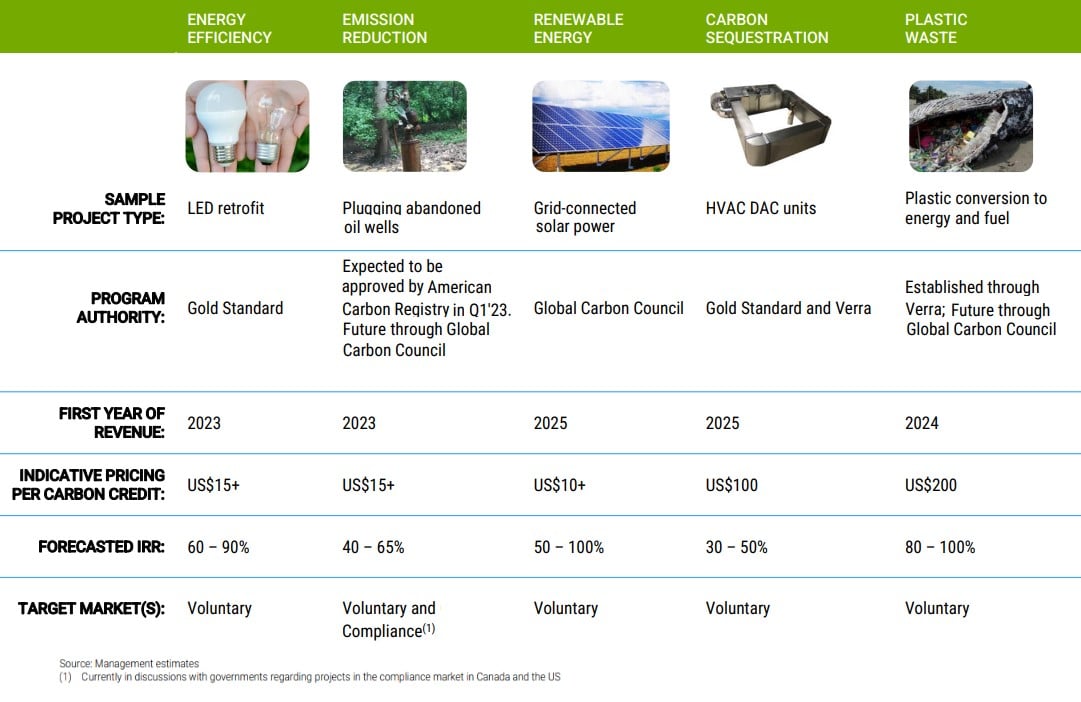
For instance – DESG has a project under contract in Sub-Saharan Africa to replace old inefficient 100W light bulbs with new and improved 7W LED bulbs.
This will provide 93% in energy savings for those switching to these new and more efficient bulbs.
- It costs only $900,000 per container of 100,000 LED bulbs and DESG is aiming for a 10-year project term…
- Thus, each container alone could potentially yield 30,000 carbon credits per year for DESG.
- That’s 300,000 carbon credits over 10 years per single container.
- That’s roughly a 60-90% IRR for this current project (according to forecasts).
And they’re already in discussions with six other countries for this LED retrofitting project.
But that’s not all…
Another project DESG has contracted is plugging abandoned and orphaned oil wells in North America – something that has become a big problem over the last decade as oil and gas fracking grew rapidly.
It’s estimated that there’s more than 3.2 million abandoned and orphaned oil wells throughout the U.S. (Pennsylvania alone has more than 330,000 of them).
You see, studies show that these abandoned and orphaned wells release methane – a greenhouse gas that’s 86x more potent than CO2, and is considered to be the second largest contributor to climate change.
Hence why DESG plugging these wells is so important – and profitable.
- Since 96% of methane leakage comes from roughly 10% of wells, this top 10% could create 2,000 carbon credits minimum per year for DESG.
- And with DESG financing a developer with $1.3 million for plugging 24 wells so far, that could yield 125,000 carbon credits every year for the next 7-15 years.
- This project thus far will yield an estimated 40-65% IRR.
Better yet, the first three pilot wells the company sealed were completed without any issues.
Now they’re in talks with Texas Pacific – a major oil and gas firm – to plug a potential 800 abandoned wells.
It’s not a stretch to say that as the U.S. and other nations rush to prevent further methane from leaking out of these abandoned wells, DevvStream will greatly benefit.
But these are just two of the projects Devvstream has operating…
They have many more waiting in their diversified and lucrative pipeline. For instance – DESG has:
- Three major projects already contracted that will yield carbon credits as early as Q2-2023,
- Another nine projects at the LOI stage (letters of intent – a document outlining an agreement before the contract is finalized), and
- Over 25 active opportunities they’re currently working on.
All-in-all DevvStream – as of now – has a pipeline of over 125 projects across the world, totaling 30 million carbon credits per year.
All of which would yield $450 million in annual revenues.
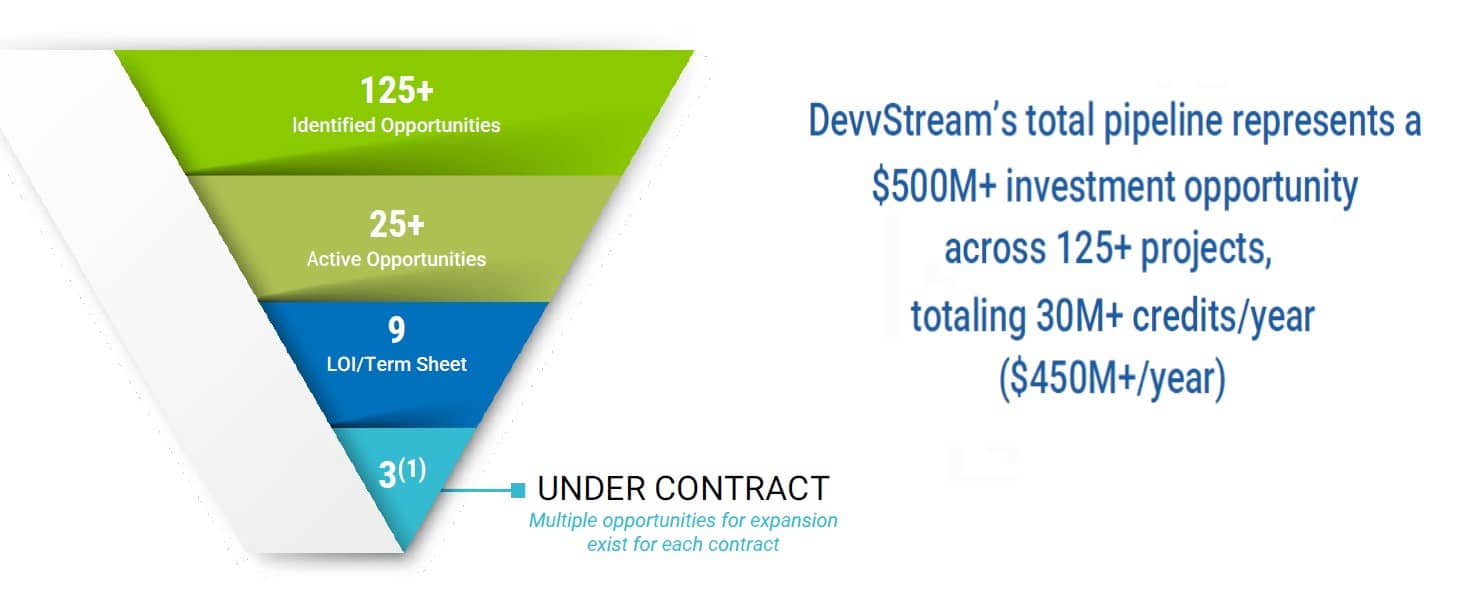
Streaming companies in other industries have created huge returns for shareholders in the past.
But it’s a relatively new model in the carbon space. And DevvStream is effectively one of the pioneers. . .
Once these projects are beginning to generate carbon credits – DevvStream will soon see the fruits of their labor.
And it’s only going to compound from here on out.
So as the world races towards becoming net-zero, the carbon credit market will rapidly grow.
And DevvStream is readily positioned to reap the rewards.
Disclosure CarbonCredits.com publishes introductory corporate profiles based on its assessment of the interest that its readers will have in them. CarbonCredits.com is paid a fee by each corporation profiled. CarbonCredits.com principals may hold directly or indirectly stock in the company’s mentioned, and from time to time buy and sell securities in the profiled corporations but not during any marketing or promotional periods. Opinions expressed in this profile as they relate to the outlook for metals, potential for projects, expectations about possible future corporate spin-offs, and potential for share appreciation are the personal opinions of the principals of CarbonCredits.com. Read Full Disclosure Here
